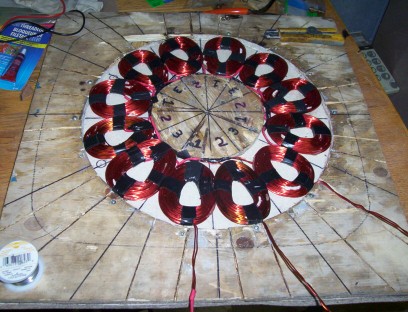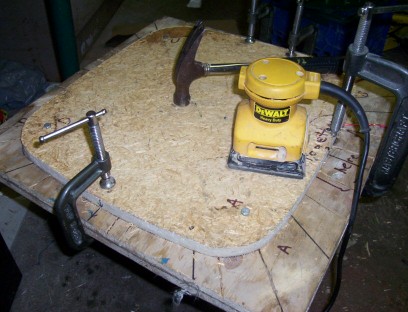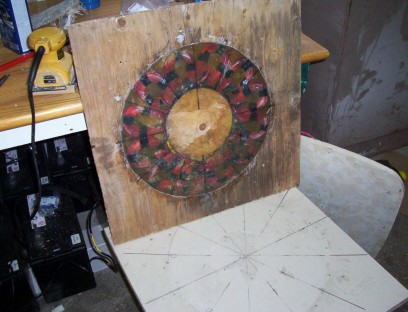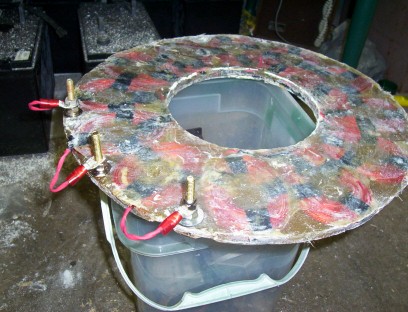Below is some notes and pictures of the stator making process the students went through to build their stator. It came out very well, and i think it is the best one so far. We began by making the stator mold.
The mold is 16" in diameter and was to hold 12 coils as described above. The center of the mold which is the most important part was made from 1/2" thick plywood as we dont want our stator to be too thick or we will lose a tremendous amount of power if the magnets couldnt get clost to one another if the stator was too thick.
We wired it in star for 12 volts. The stator is 3 phase so to wire it, we took each phase(4 coils and soldered the end wire of the first coil to the start wire of the second, and so on til all 4 coils were soldered together.
The start wire from the first coil and the end wire from the last were left for now. When we were done soldering all 3 of our phases up, we then took all the start wires and soldered them into a bunch, and all we were left with was 3 wires sticking out of the mold which each wires sticking out is 1 phase(hence 3 phase).

I like to encase all the wires in the fiberglass because i think it looks neater with no wires exposed, and the wires cant get scratched or broken once they are hardened in the stator. The only bad thing that i can see here is that you cant change your stator later from star to delta(read some good posts on fieldlines to learn what star and delta wiring is).
We then put the fiberglass resin into the mold and put the lid on. I like to use a sander and vibrate the top of the mold for a bit to release any air bubbles and to get the stator nice and flat. You could lightly tap it with a hammer too and the desired effect would take place also.

some say to wait 2 hours to take the lid off the stator but i wait until the next day and as pictured here, it came out excellently. We use grease on the top and bottom of the mold so it will release easily.
src="http://www.otherpower.com/images/scimages/1135/lid_off_stator.jpg" width=80%>

above is the picture of the bottom off the stator and all that is left is the 1/2" thick plywood holding the stator in and ensures the stator is 1/2" thick which is perfect. I found that because i screw the stators 3 pieces together, top, middle and bottom, that it would be advantageous to put some grease or soap into the heads of the screws so that hardened fiberglass that may be excess, doesnt get into the screw heads and you then have to do more work to clean the fiberglass out of them to release the stator from the mold.
Finally below is a picture of the stator completely out of the mold. I use a dremel tool to carefully cut the stator from the mold, Be extra carefull in this stage as you dont want to knick the wires in or around the stator, or else you have bigger trouble. I have done this before, thats how i know. Once the wire is cut, you have to remove some hardened fiberglass to solder an extension on the stator wire. It could be worse also and your stator is garbage. Please be carefull here.The last thing we did, was to add 3 brass bolts on the stator so it will be easy to connect the wires to the wire going down the tower. The bolts are bought at any plumbing store. I believe they are the long bolts that hold the back of your toilet to the business end of you toilet  lol
lol

Well,that was it for that day. The next day we will start on the blades. Dan tells me that i can use 12' blades on this turbine so that is way better than the 10' ones i was going to use, and because blade windswept diameter is one of the primary reasons for more power, this genny will produce alot more power than we initially hoped for...  pickster
pickster